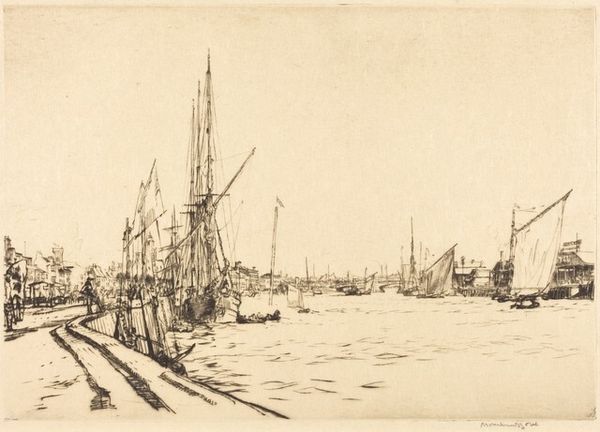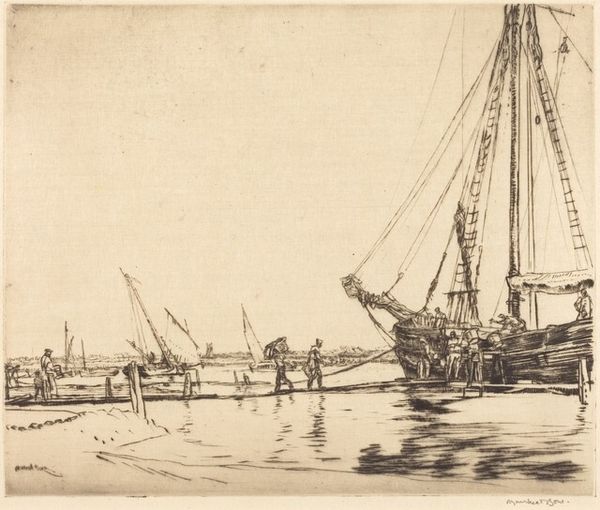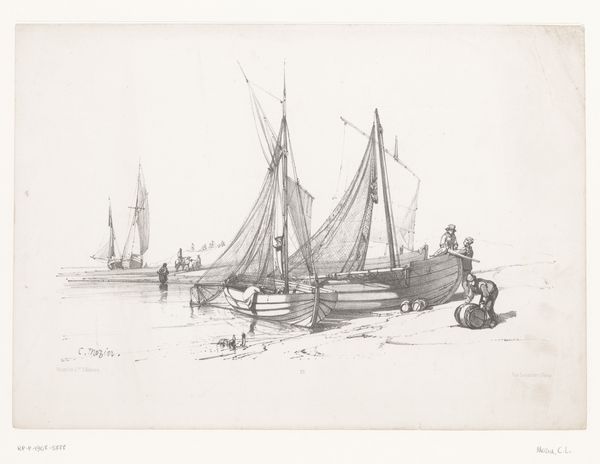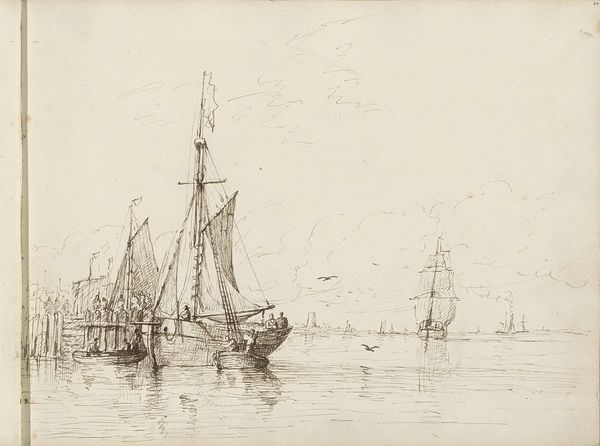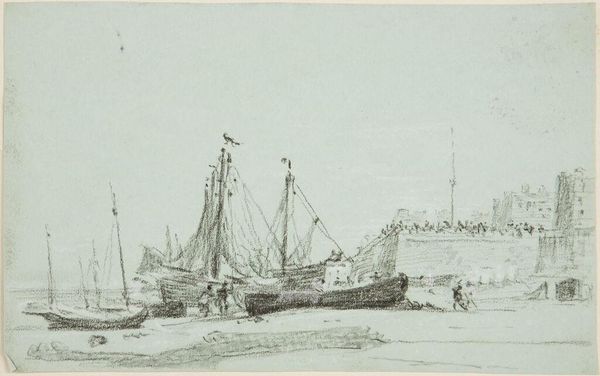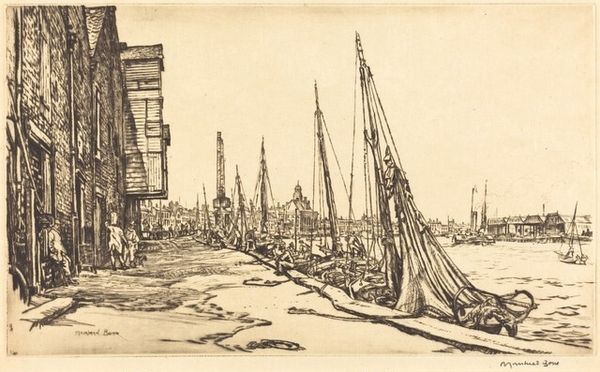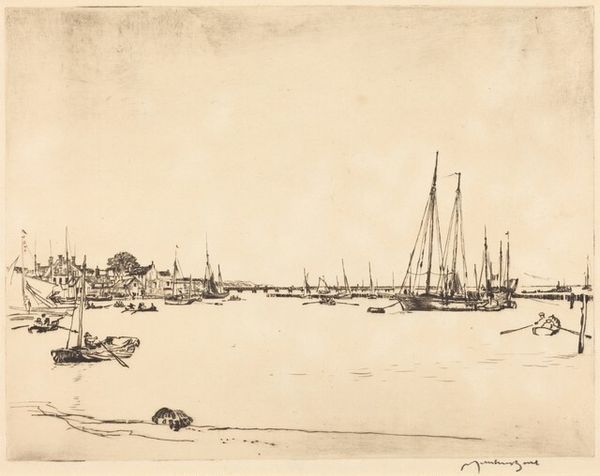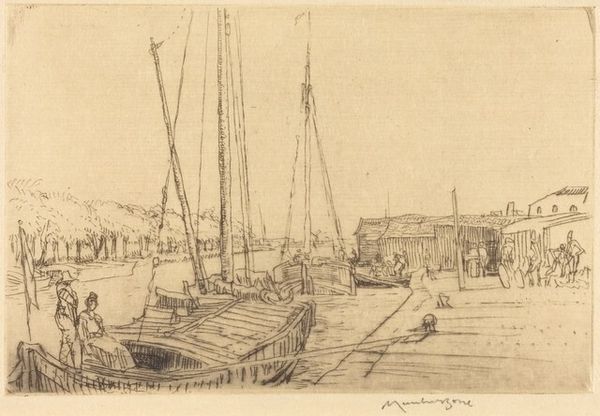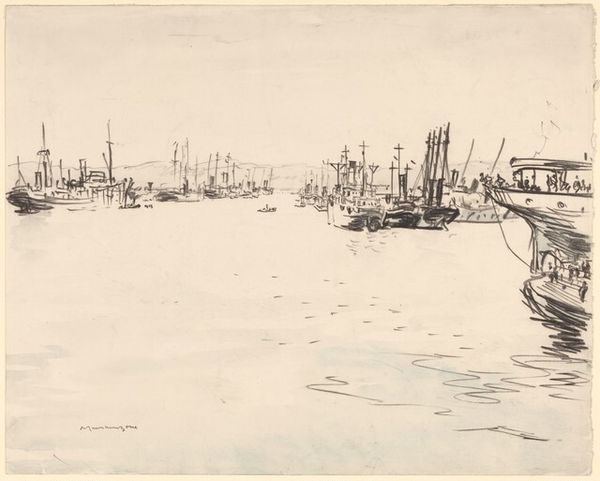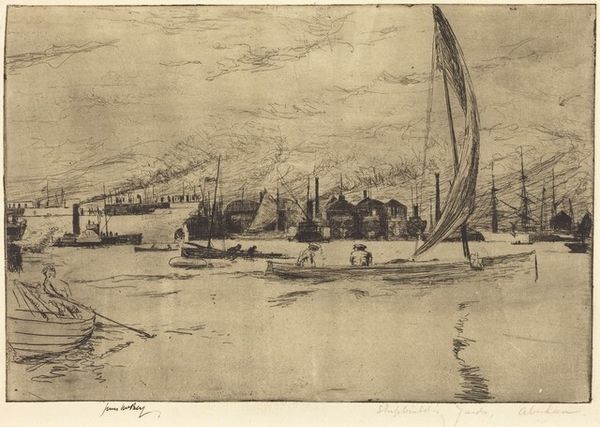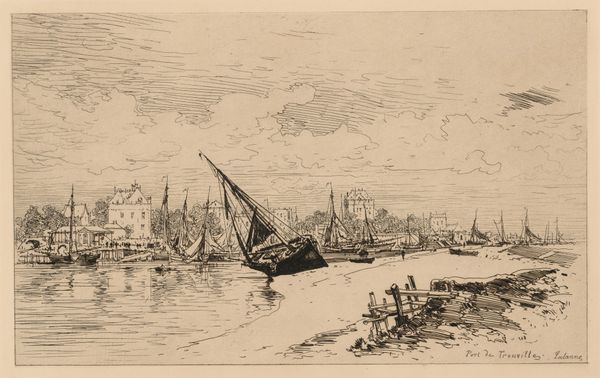
print, etching
# print
#
etching
#
landscape
#
genre-painting
Copyright: National Gallery of Art: CC0 1.0
Curator: Arthur Briscoe's "Low Tide, Brixham," an etching from 1927, depicts a harborside scene with fishing vessels at low tide. Editor: There's a melancholy feeling, despite the busyness. The muted tones and the looming boats impart a certain somber stillness. Curator: Notice how the composition leads the eye, from the boats resting on the shore towards the cluster of vessels further out to sea? The repetition of the mast lines creates a sense of rhythm and depth, typical of Briscoe's focus on structural elements. Editor: Right, and that rhythm echoes the repetition of labor. Briscoe, in choosing etching, foregrounds the mark-making, each stroke of the needle into the plate suggestive of the craftsman's hand shaping his material to make a living from the sea. Curator: Indeed, the material quality is also key here. The monochromatic palette simplifies the scene, stripping it to its bare essentials—light and form—highlighting the linear quality that gives shape to the objects, which are reminiscent of a Cubist re-assembling. Editor: Yes, but it's the evidence of use on those boats, the grit and labor suggested in the very lines of the etching, that speaks of the material existence of these workers, how these ships and this landscape are fundamentally altered through work. Curator: A landscape subtly transformed. It allows a clear, analytical breakdown to reveal an underlayer about this working environment. But without a sense of visual architecture to carry all that human context. Editor: For me, this speaks of lives woven into the very material of those boats. Each vessel bears witness to toil and trade in equal measure. Curator: Ultimately, this image achieves an arresting aesthetic impact through a carefully constructed equilibrium of shapes, lines, and tones, where labor adds more context to appreciate the artist’s skill. Editor: Indeed, considering the artist's hand, the place itself, we get to understand it better and recognize its value through its creation.
Comments
No comments
Be the first to comment and join the conversation on the ultimate creative platform.
